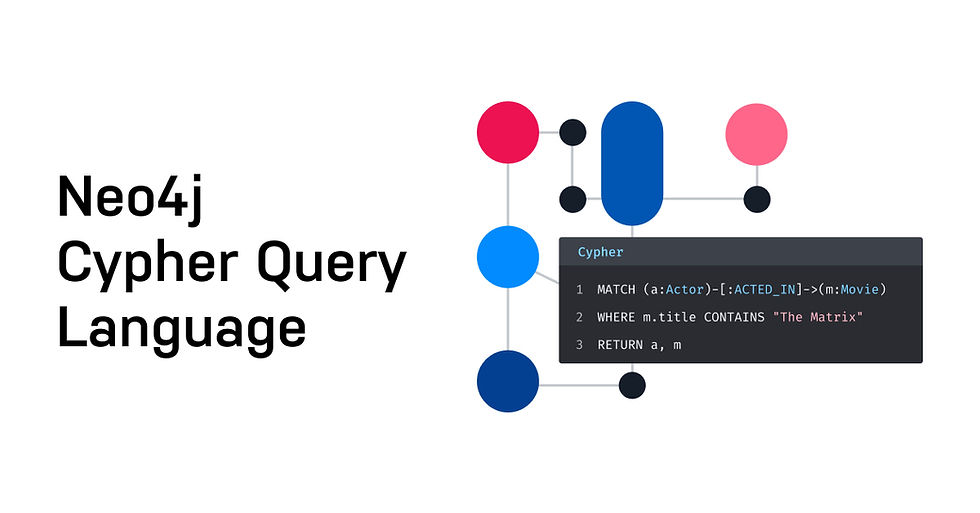
Welcome to this introductory guide on Cypher Query Language! Cypher is a powerful and intuitive language designed specifically for querying and updating graph databases. In this demo, we'll cover the general syntax of Cypher, including the structure of basic queries and the key elements you need to understand to get started.
Core Components of a Cypher Query
At its core, a Cypher query is composed of several key parts:
MATCH Clause: Specifies the pattern of nodes and relationships you want to find in the graph.
WHERE Clause: An optional clause to filter the results of the MATCH clause based on certain conditions.
RETURN Clause: Specifies what you want to return from the query.
Let's break down these elements further.
Nodes and Relationships
In Cypher:
Nodes are represented by round brackets (). Inside these brackets, you can specify a label which categorizes the node. For example, (n:Person) where n is a variable representing any node with the label Person.
Relationships are represented by square brackets [] and are placed between nodes. An arrow --> indicates the direction of the relationship. For example, (a:Person)-[r:KNOWS]->(b:Person) where a and b are variables representing nodes with the label Person, and r is a variable representing a KNOWS relationship between them.
Variables
Variables in Cypher allow you to refer to the elements in your pattern. In our previous example, a, b, and r are variables.
RETURN Clause
The RETURN clause specifies what you want to see in the output. You can return nodes, relationships, or specific properties. For instance, the query below returns the names of the people involved in the KNOWS relationship and the since property of the relationship.
MATCH (a:Person)-[r:KNOWS]->(b:Person)
RETURN a.name, b.name, r.sincePutting It All Together: Basic Query Structure
Here's a basic query structure in Cypher, step by step:
Step 1: MATCH Clause
This pattern matches nodes with a specific label and a specified relationship between them.
MATCH (n:Person)-[r:KNOWS]->(m:Person)Step 2: WHERE Clause (Optional)
This optional clause filters the matched nodes based on a property.
WHERE n.age > 30Step 3: RETURN Clause
This clause specifies the nodes and relationships to be returned by the query.
RETURN n, m, rExample Queries
Example 1: Basic Node Retrieval
Retrieve all nodes labeled as Person.
MATCH (n:Person)
RETURN nExample 2: Basic Relationship Retrieval
Retrieve all KNOWS relationships between Person nodes.
MATCH (a:Person)-[r:KNOWS]->(b:Person)
RETURN a, r, bExample 3: Retrieving Specific Properties
Retrieve the names of the people involved in the KNOWS relationship and the since property of the relationship.
MATCH (a:Person)-[r:KNOWS]->(b:Person)
RETURN a.name, b.name, r.sinceExample 4: Using WHERE Clause
Retrieve nodes with a specific label and a specified relationship between them, filtered by a property.
MATCH (n:Person)-[r:KNOWS]->(m:Person)
WHERE n.age > 30
RETURN n, m, rConclusion
And that completes the general syntax of Cypher. Understanding these basic elements will help you write powerful queries to explore and analyze your graph data. With the MATCH, WHERE, and RETURN clauses, you have the foundational tools to start querying your graph database effectively. Happy querying!
Comments